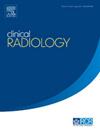Correlation of semi-quantitative analyses and visual scores in pulmonary perfusion SPECT/CT imaging with pulmonary function test parameters in patients with interstitial lung diseases
IF 2.1
3区 医学
Q2 RADIOLOGY, NUCLEAR MEDICINE & MEDICAL IMAGING
引用次数: 0
Abstract
Aim
To evaluate the correlation between semi-quantitative analyses and visual scores of pulmonary perfusion Single Photon Emission Computed Tomography (SPECT)/ Computed Tomography (CT) imaging and pulmonary function test parameters (PFTs) in patients with interstitial lung diseases (ILDs).
Materials and methods
This retrospective study included 35 patients with ILDs from China-Japan Friendship Hospital between January 2020 and December 2022. All patients underwent pulmonary perfusion SPECT/CT imaging and a pulmonary function test. Visual scores of pulmonary perfusion SPECT/CT images were determined using the Meyer method, and functional lung volumes of pulmonary perfusion were calculated using various cutoff values (5%–95% of the maximum pixel value). PFTs included forced expiratory volume in the first second (FEV1) and FEV1 as a percentage of the predicted value (FEV1%), forced vital capacity (FVC) and FVC as a percentage of the predicted value (FVC%), one-second rate (FEV1/FVC), pulmonary carbon monoxide dispersion (DLCO) and DLCO as a percentage of the predicted value (DLCO%). Pearson's correlation was calculated to compare visual scores and lung perfusion functional volumes with PFT indices.
Results
Visual scores correlated with FEV1, FEV1%, FVC% and DLCO%, with a significant correlation observed for FEV1% (r = 0.576, P < 0.001). When taking the maximal pixel value of bilateral lung fields or unilateral lung field as 100%, lung perfusion volumes were significantly correlated with FEV1, FEV1%, FVC and FVC% at a threshold of 15%–30% (rs > 0.6, P < 0.001).
Conclusion
Pulmonary perfusion volumes within the threshold of 15%–30% in pulmonary perfusion SPECT/CT imaging reliably reflect lung function and outperform visual scores in patients with ILDs.
求助全文
约1分钟内获得全文
求助全文
来源期刊

Clinical radiology
医学-核医学
CiteScore
4.70
自引率
3.80%
发文量
528
审稿时长
76 days
期刊介绍:
Clinical Radiology is published by Elsevier on behalf of The Royal College of Radiologists. Clinical Radiology is an International Journal bringing you original research, editorials and review articles on all aspects of diagnostic imaging, including:
• Computed tomography
• Magnetic resonance imaging
• Ultrasonography
• Digital radiology
• Interventional radiology
• Radiography
• Nuclear medicine
Papers on radiological protection, quality assurance, audit in radiology and matters relating to radiological training and education are also included. In addition, each issue contains correspondence, book reviews and notices of forthcoming events.
 求助内容:
求助内容: 应助结果提醒方式:
应助结果提醒方式:


